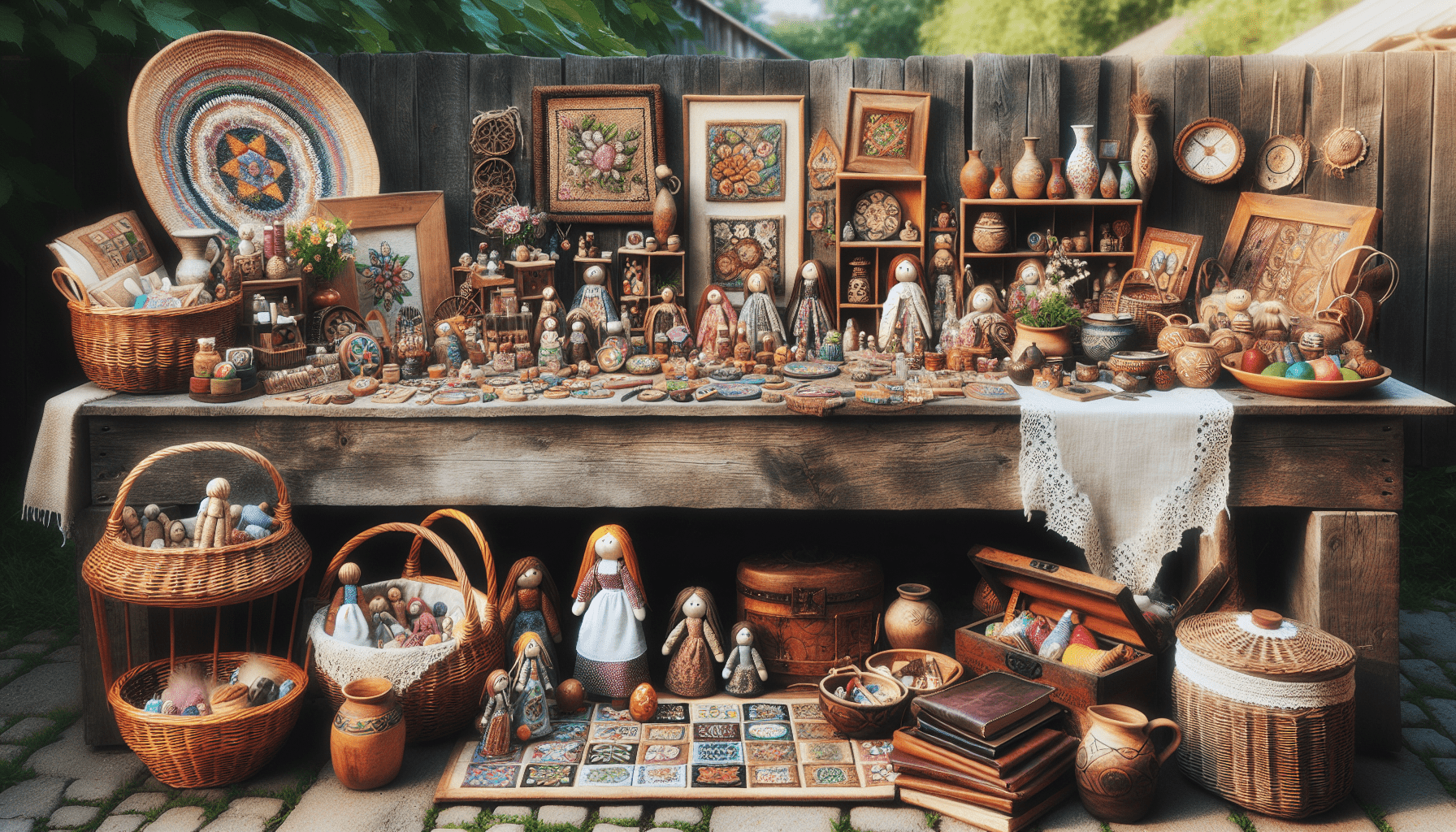Whether you’re a seasoned craft fair vendor or just starting out, the question of how many different items to sell at a craft fair is always a puzzling one. With so many beautiful and unique creations to showcase, it’s tempting to bring a diverse array of products in the hopes of appealing to a wide range of customers. But finding the perfect balance between variety and focus is key to maximizing your sales and creating a memorable shopping experience. In this article, we will explore some valuable insights and practical tips to help you determine the optimal number of items to sell at your next craft fair, ensuring both your success and customer satisfaction.
Consider Your Target Audience
When planning to participate in a craft fair, it is important to consider your target audience. Understanding who your potential customers are will help you tailor your inventory and marketing strategies to effectively reach them. Consider factors such as age group, gender, and interests.
Age Group
Consider the age group of your target audience. Are you targeting children, teenagers, young adults, or seniors? The age group of your audience will influence the type of products you offer and the overall aesthetics of your booth.
Gender
Determine the gender of your target audience. Are you catering to primarily male or female customers? This information will help you design products that cater to their preferences and interests.
Interests
Identify the interests of your target audience. Do they have specific hobbies, passions, or preferences? Knowing what your customers are interested in will enable you to offer products that align with their needs and preferences. For example, if your target audience is interested in nature and sustainability, you might consider offering eco-friendly products or items inspired by the outdoors.
Assess Your Available Inventory
Before participating in a craft fair, it is crucial to assess your available inventory. Taking stock of your current products will help you determine what you have to offer and identify any gaps in your inventory.
Product Quantity
Evaluate the quantity of each product you have in stock. Make note of which items are limited in quantity and consider restocking those in high demand.
Variety
Assess the variety of products you have available. Having a diverse range of offerings will attract a wider audience and increase the chances of making sales. Consider adding new products or expanding into different categories to enhance the variety of your inventory.
Storage Space
Examine your storage space to ensure you have enough room to store and transport your inventory to the craft fair. Consider organizing your products in a way that makes them easily accessible during the event.
Evaluate the Competition
Understanding your competition is essential in any business, including craft fairs. Take the time to evaluate the other vendors who will be participating in the event.
Number of Vendors
Assess the number of vendors who will be present at the craft fair. Consider how many of them offer similar products to yours. This will help you gauge the level of competition and determine how you can stand out.
Popular Items
Observe the popular items that other vendors are selling. Identify which products are in high demand and consider offering a unique twist on those to attract customers to your booth.
Unique Offerings
Identify what sets you apart from your competition. Are there any products or unique offerings that make your booth standout? Highlight your unique selling points to draw customers to your booth and increase your chances of making sales.
Focus on Quality over Quantity
When it comes to crafting products for a craft fair, it is important to prioritize quality over quantity. Customers appreciate well-crafted items that are made with care and attention to detail.
Craftsmanship
Emphasize the craftsmanship of your products. Make sure your items are skillfully made and showcase your expertise. Attention to detail and high-quality craftsmanship will attract customers and make them more likely to purchase from you.
Materials
Use high-quality materials in your products. Customers value items that are made with durable and sustainable materials. Consider sourcing materials from reputable suppliers to ensure the quality of your creations.
Durability
Create products that are built to last. Craft items that can withstand everyday use and remain in good condition for a long time. Customers are more likely to invest in products that offer durability and longevity.
Consider Pricing and Profitability
Pricing your products appropriately is crucial for profitability. Take into consideration various factors when determining the prices of your items.
Profit Margins
Calculate your profit margins to ensure that you are generating enough revenue to cover your expenses and make a profit. Consider the cost of materials, production, and other overhead expenses.
Pricing Strategy
Develop a pricing strategy that aligns with your target audience and the perception of value for your products. Research the market and consider what similar products are being sold for. Price your items competitively, taking into consideration any unique features or craftsmanship that sets your products apart.
Production Costs
Determine the production costs of your items. This includes the cost of materials, labor, and any other expenses incurred during the creation of your products. Understanding your production costs will help you price your items appropriately.
Themes and Coordinated Sets
Offering matching items, seasonal themes, and gift sets can add value to your products and attract customers looking for coordinated sets.
Matching Items
Consider creating matching sets of products that customers can purchase together. For example, if you sell jewelry, consider offering matching earrings and necklaces that can be purchased as a set. This increases the value and appeal of your products.
Seasonal Themes
Incorporate seasonal themes into your products. Create items that are specific to certain seasons or holidays, such as Christmas ornaments or summer-themed accessories. This will attract customers looking for seasonal items and adds a sense of timeliness to your offerings.
Gift Sets
Create gift sets that are ready for purchase. Package complementary items together and market them as ideal gifts for special occasions like birthdays or anniversaries. This provides convenience to customers and increases the likelihood of sales.
Consider Practicality and Functionality
Practical and functional products have a broader appeal to customers. Consider creating items that can be used in everyday life or serve a specific purpose.
Everyday Use
Design products that are practical for everyday use. Consider items such as tote bags, kitchen accessories, or home organization tools that customers can integrate seamlessly into their daily lives. These practical products have a higher chance of being purchased.
Home Decor
Craft home decor items that can enhance customers’ living spaces. Consider items like decorative pillows, wall art, or centerpieces that add a touch of style and personality to any room. Customers are always on the lookout for unique and beautiful home decor items.
Practical Gifts
Craft items that can be gifted for special occasions. Think about creating personalized mugs, custom-made jewelry, or handcrafted candles that make thoughtful and unique gifts. These types of products are always in demand, particularly during holidays or special events.
Market Trends and Seasonal Demand
Stay up to date with market trends and consider seasonal demand when planning your craft fair inventory.
Current Trends
Research and identify the current market trends in your specific niche. Incorporate those trends into your product designs or offer items that are in line with popular styles. This will attract customers who are seeking the latest and trendiest products.
Seasonal Products
Consider the demand for seasonal products throughout the year. For example, during the winter season, customers may be looking for cozy knitwear or holiday-themed decorations. Adapting your offerings to match the seasonal demands will increase the appeal of your products.
Holiday Themes
Take advantage of holiday themes and create products specific to each holiday. Whether it’s Halloween, Valentine’s Day, or Thanksgiving, customers often seek themed items to celebrate these occasions. Craft products that capture the spirit of each holiday to attract customers and increase sales.
Experiment with Different Categories
Explore different categories within your craft niche to expand your product offerings and appeal to a broader range of customers.
Craft Supplies
Consider offering craft supplies alongside finished products. Customers who are also crafters may be interested in purchasing materials and tools from you. This adds an additional revenue stream and attracts a different segment of customers.
Home Accessories
Explore the world of home accessories and offer items that can enhance customers’ living spaces. This can include items like decorative candles, planters, or unique artwork that customers can use to personalize their homes.
Jewelry and Accessories
Expand your product line to include jewelry and accessories. This can include handmade earrings, necklaces, bracelets, and even unique accessories like hair clips or keychains. Jewelry and accessories have a broad appeal and can attract customers of different ages and genders.
Customer Feedback and Preferences
Listen to your customers and pay attention to their feedback and preferences. This valuable information will steer you in the right direction when it comes to your craft fair inventory.
Previous Sales
Analyze your previous sales data to determine which products have been the most successful. Take note of customer favorites and consider restocking those items for future craft fairs.
Customer Surveys
Conduct surveys or ask for feedback from your customers. This can be done through online platforms or in-person during craft fairs. Gather information about their preferences, what they are looking for, and any suggestions they may have. This will help you make informed decisions about your inventory.
Social Media Interactions
Engage with your customers on social media platforms. Pay attention to their comments, likes, and shares. This will give you insight into which products generate the most interest and help you gauge customer preferences. Use this information to refine your inventory and marketing strategies.
In conclusion, when planning to participate in a craft fair, consider your target audience, assess your available inventory, evaluate the competition, focus on quality over quantity, consider pricing and profitability, explore themes and coordinated sets, consider practicality and functionality, stay informed about market trends and seasonal demand, experiment with different categories, and listen to customer feedback and preferences. By carefully considering these factors, you will be able to tailor your craft fair inventory to maximize sales and attract satisfied customers. Happy crafting!



